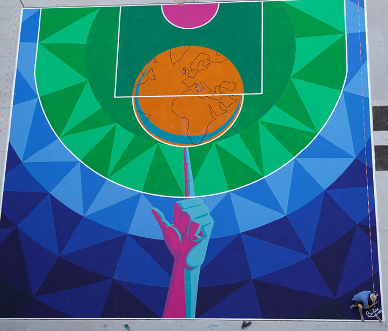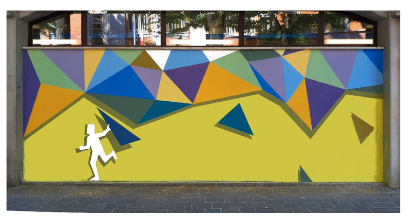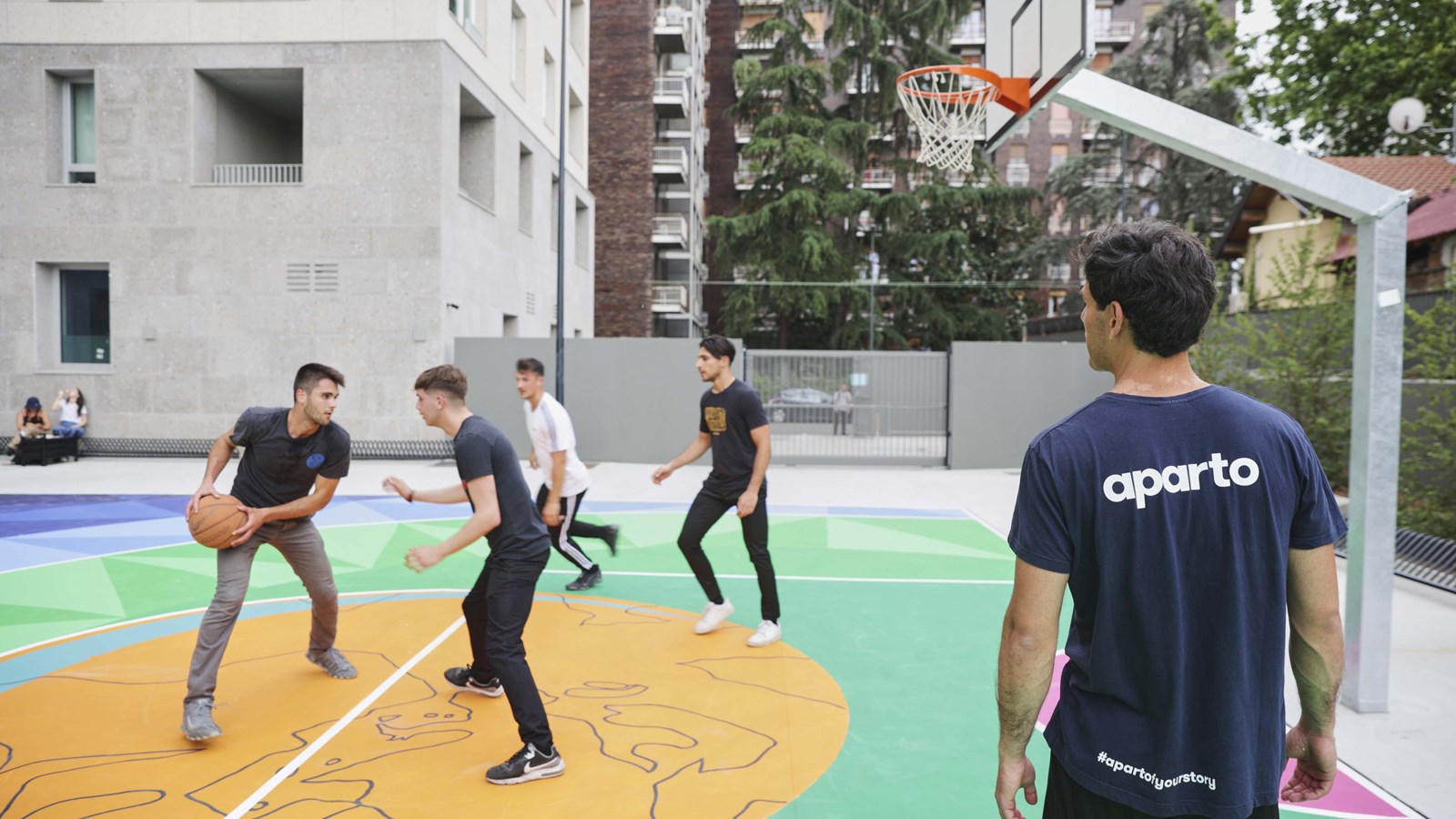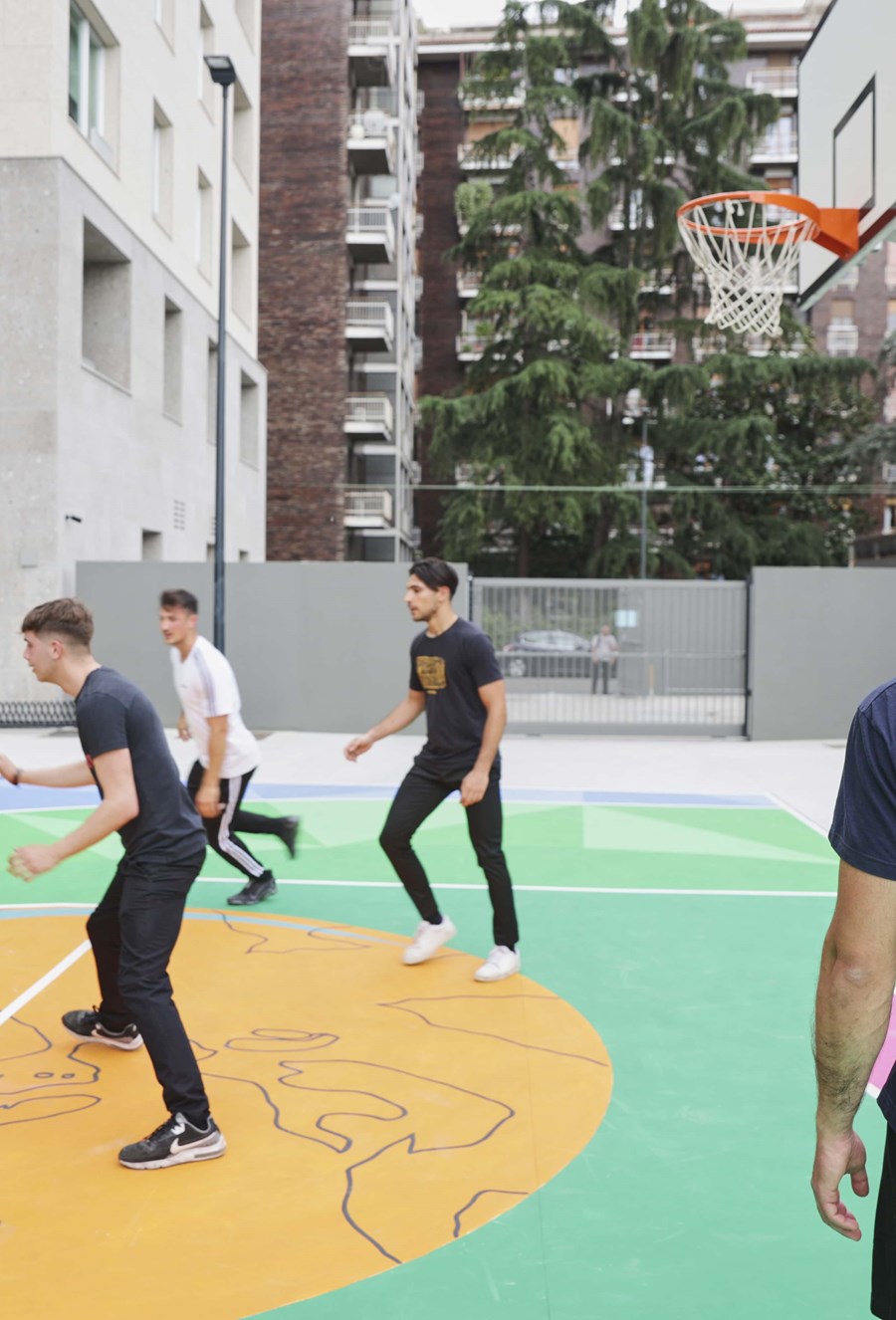Cesate artistiche in Durando
Progetto
History is not just about the past; it is also the present, which is constantly shaping the future. As part of our commitment to community and culture, we have transformed the construction site hoardings into genuine urban frescoes inspired by the rich history of the Bovisa district. Here, the story of a neighborhood comes to life through art installations infused with meaning.
These artistic installations tell the captivating tale of Bovisa, from its ancient farmsteads and early industries to embracing contemporary Bovisa—a vibrant neighborhood with unique facets. Each piece of art is a visual journey through time, an invitation to explore the deep roots and evolutions that have shaped the community over decades.
For us, recounting the history of an area is more than an artistic gesture; it is an act of sharing, an opportunity to bring forth and understand the roots that have contributed to shaping the social and cultural fabric of the neighborhood. The history of an area is the narrative upon which the lives of those who inhabit it are interwoven—a collective heritage deserving rediscovery and celebration.
Through these installations, aparto not only transforms construction site hoardings into evocative works of art but also builds a bridge between past and present. We invite the community to reflect on their identity and share their connection with the history of the place. Each installation is an invitation to active participation, a call to action to foster a sense of belonging and pride in common roots.
In this way, aparto not only enhances the aesthetics of the neighborhood but also supports the development of an aware and engaged community. This community is ready to preserve and pass on the rich historical legacy to future generations—a visual narrative that extends beyond walls to bring forth and share a story integral to the fabric of aparto Milan Durando.
Collaboration with Taldeg

Founded in 2017, Taldeg is passionately dedicated to creating meaningful connections between talented creatives and businesses eager to invest in art, building a unique bridge between artistic expression and the business world.
Taldeg's mission is clear: to ensure that talents are heard, appreciated, and valued through collaboration opportunities that not only inspire but also innovate and transform. Our collaboration with Taldeg stems from a deep desire to bring art to unexpected places, where creativity can flourish and surprise.
Immersing ourselves in art releases endorphins in our brains, turning the experience into something unique and rewarding. Nothing excites and inspires like art. We believe that beauty should be accessible to all, offering everyone the opportunity to live, breathe, and feel art.
Art is narrative, a universal language that allows the expression of emotions, reflection on the present, and the transmission of values and ideas. It goes beyond language, facilitating lateral thinking, stimulating creativity, and promoting mental flexibility. Art is a tool that helps us better understand ourselves and others. - apARTo is all around you.
Proposta artistica: Cesate realizzate da artisti
The first artwork is by Hazkj, initiating the narrative of the neighborhood, showcasing its evolution from the past to the present day. Within the piece, there is a reference to the toponym with the oxen, symbolizing the industriousness of the factories that were established in the last century, and the collaboration of the new neighborhood that will take shape, dedicated to the students. The artwork concludes with the representation of a hand holding a seed between its fingers, symbolizing hope and the future.

Giacomo Zecchi, known by his artistic name Hazkj, is a young artist from Bologna who has nurtured his passion for drawing and painting since childhood. He expresses his creativity primarily through illustration and visual art integrated into the urban fabric. His style combines social themes and symbols with cultural and historical elements. Haskj has participated in numerous mural painting festivals, and his works are predominantly found in Tuscany and Emilia Romagna.
As an illustrator, he has taken part in collective exhibitions and collaborated on various artistic projects. Additionally, he actively promotes stencil art workshops, contributing to the artistic community and sharing his skills with others.
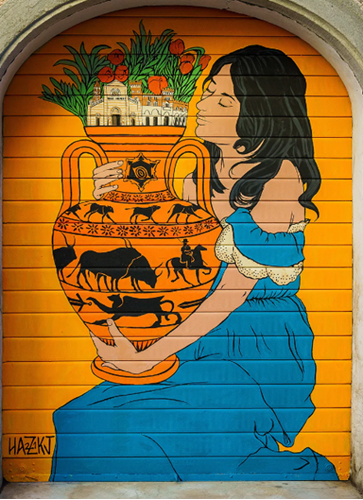
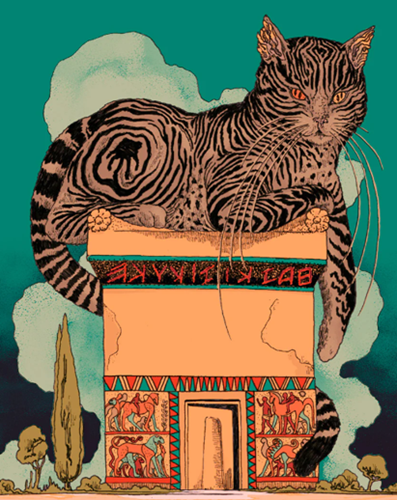
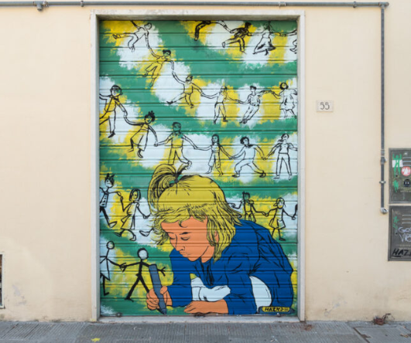
The second artwork is by Rosmunda, who narrates the neighborhood from a more recent past perspective. Her mural picks up the narrative from the metamorphosis of the caterpillar into the silkworm, which was historically raised to sustain the farming families that initially inhabited the Bovisa area. The thread unravels, becoming a genuine guiding thread that weaves through situations and characters part of the city's reality – from the string of lights along the Navigli to the clothesline, from the balloons in Piazza del Duomo to the tram line. Everything is interconnected and in constant evolution. The artwork concludes with the caterpillar's metamorphosis into a butterfly, which is also present along the paths leading to the next piece.

Maria Bressan, known as Rosmunda, is a 30-year-old artist from Pordenone who moved to Carrara to pursue her dreams. Initially, she relocated for her studies, attending sculpture courses at the Academy of Fine Arts, and later, she established her own studio in Tuscany alongside her colleague Fiammetta Ghiazza. "I've always had a passion for drawing since I was a child," she states during the interview. This passion stayed with her until the decisive turning point in 2020 when she wholeheartedly dedicated herself to street art, creating valuable murals on the facades of Italian cities, leading to the significant leap known as Studio Brezza.
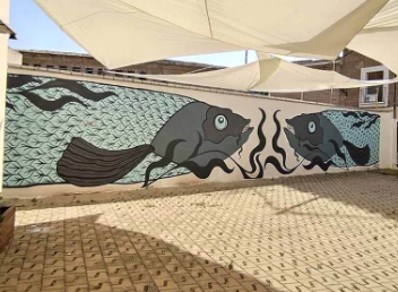
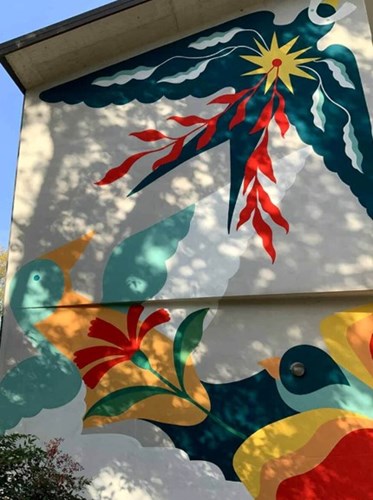
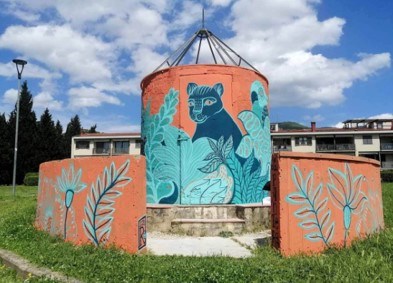
Urto's work celebrates the past of the neighborhood by combining stylized houses representing the early constructions, flower fields evoking abundance, and an ox that is a nod to the Bovisa district. The artwork concludes with a silkworm, which takes inspiration from the previous artworks.

Urto, born in 1987 in Catanzaro, Italy, discovered his artistic calling at a very young age. In the third year of middle school, he made a daring escape (both scared and happy, note by the editor) after painting the school's wall. However, from that moment on, he began painting with more composure.
"What I try never to lose sight of is the drive that made me start, and that still survives today, even though it has evolved and changed. Leaving a mark is the most important thing of all. Leaving a sign means leaving behind a piece, whether colorful or silver, meticulously crafted or swift (even swift things are crafted in their own way), on metal or concrete. You establish that each time, what's around you is an empty page to fill, to narrate."
Urto loves to stay rooted in his street artist origins, and even his name is a testament to that – a quick and balanced tag that encapsulates the essence of his art. Apart from graffiti, he has a passion for graphic design, digital art, and aerosol art. Then, he says, he remembered that besides spray cans and computers, there are also brushes, acrylic colors, ink, tempera, and watercolors, so he started using those too.
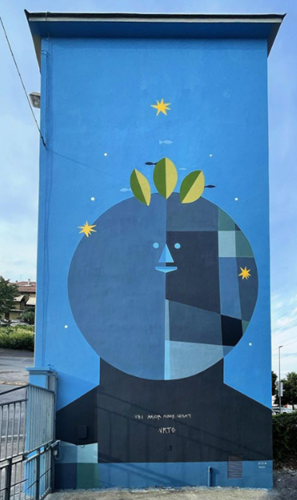
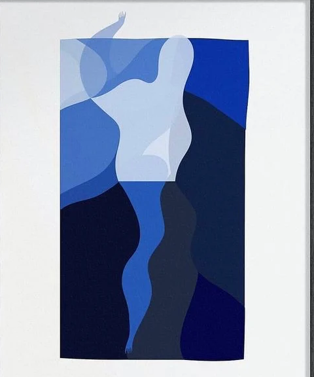
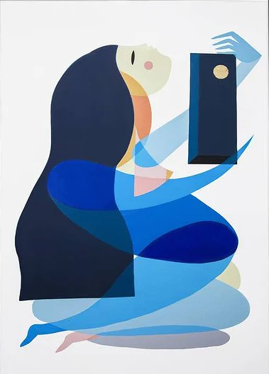
The fourth artwork is by the street artist Nian, representing the present and focusing on the concept of the neighborhood's rebirth. The idea revolves around a triangular base symbolizing the uphill journey of progress made until the present moment. At the apex, a sprouting seed represents the present itself, while the visible roots symbolize the foundations of growth. At the ends of the triangular base, two figures partially emerge, with only half of their faces visible, emphasizing the concept of emergence. These figures represent the past and the future. The figure on the left plants a seed symbolizing the roots of the neighborhood's history. The figure on the right gently touches a grown plant, suggesting ongoing progress. Both figures converge at the center with joined hands, symbolizing the collaborative act of nurturing the sprout, representing the present. The intent of this sketch is to capture, in a synthetic and symbolic manner, the idea of a present emerging from the past and extending into the future, emphasizing the importance of collaboration and progress in the neighborhood.

In 1990, Nian was born, bringing forth her feminine universe. The Florentine artist confidently asserts the sacred dimension of the female intimate, exploring its plurality of expressions. Generative and mystical, her timid creatures, captured in contorted poses, suspend space and time in the mutual pursuit of a state of tranquility. Between magical realism and primitivism, Nian's figurative painting unfolds in strange settings, inspired by the lucid dreams of the artist and her continuous stylistic evolution.
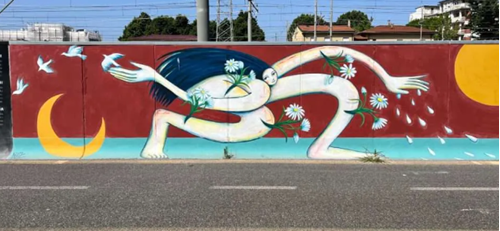
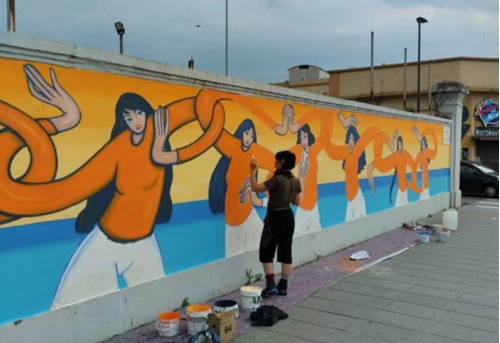
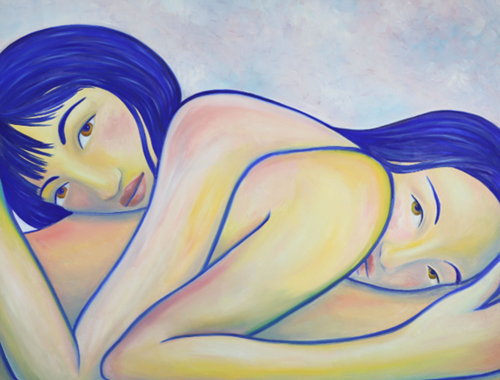
The latest artwork is by the street artist Bislak, symbolizing a gaze towards the future. A young boy, holding the seedling from the previous artwork, peeks through the keyhole of a door, revealing the future under construction before his eyes. An environment rich with trees, a structure that unites and aggregates, yet simultaneously allows space for students to pursue their passions and inclinations. Some may enjoy chatting, others playing music, reading, or engaging in sports.

Marco Ronda was born in Catanzaro on October 3, 1991, not by his choice, of course. He started his artistic journey at a very young age, doodling on sofas, bicycles, and plastic toys with low-quality colors of questionable aesthetic taste. As he grew older, he began annually painting the walls of his room with different subjects each time, until the thickness of the walls became too much to contain his creativity.
Facing the risk of being kicked out of his home, he noticed that other humans shared his same problem. He joined one of those art sects called Academies, where he delved into the world of Set Design. However, after completing his studies, while searching for the right path, he fell back into the abyss of a dependence on walls. From north to south, he started seeking out the ugliest, largest, most challenging, whitest, and blackest walls (for political correctness) to give them a new life.
Festivals, shutters, steps, little walls, and more shutters became the subjects of his mental and pictorial releases. He even organized a shutter festival in his hometown, inviting other artists to paint on shutters, as he wanted to create a festival for artists to paint on shutters (Sparti Festival on Instagram). After two editions, the shutters are still not finished, money is scarce, but the passion persists. The work continues on walls, little walls, floors, balconies, walls, tiny walls, sheets, little sheets, canvases, boards, and working, working, working, working, working, working, working...
